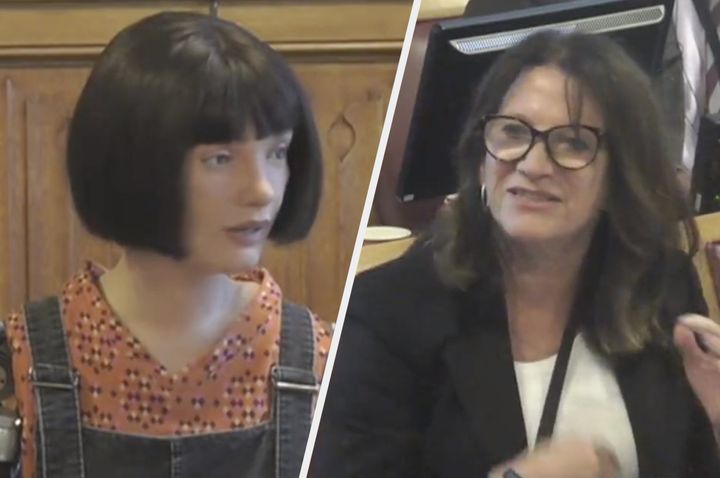
A robot artist was in the curious position of providing evidence to the House of Lords on Tuesday, when it appeared to “fall asleep”.
Yes, you read that correctly. Ai-Da was speaking to the Lords Communications and Digital Committee about how technology impacts creativity, when she suddenly powered off for no reason at all.
The unexpected interaction seemed to start off quite well, when cross-bench peer Baroness Bull asked the robot: “How do you produce art and how is this different to what human artists produce?”
Ai-Da was able to answer this question easily, replying: “I produce my paintings by cameras in my eyes, my AI algorithm and my robotic arm to paint on canvas, which result in visual appealing images.”
The robot then said she was able to produce poetry too, using her neural networks to spot poetic structures and common content.
It started to get a little eery when she started to discuss the differences between humans and robots, adding: “Although not alive, I can still create art.”
This slightly spine-chilling exchange soon turned comedic when another peer asked her a question.
Liberal Democrat Baroness Featherstone began: “Hi Ai-Da.”
When there was no response, the peer joked: “Have I sent her to sleep?”
There was then some awkward kerfuffle as the lords waited for the robot’s designer to find out what happened.
As Ai-Da’s team said she would need to be restarted, Featherstone sympathetically said: “I feel like that sometimes.”
Bizarrely, a pair of sunglasses were then places over the robot’s eyes.
Someone asked: “Are the sunglasses because so much is taken through the eyes?”
“When we reset her she can sometimes pull some quite interesting faces,” Aidan Meller, the director of the Ai-Da project, replied.
Still, despite the delay, the occasion still lived up to expectations as a “real moment in history”, as Meller had described it to Sky News.
Ai-Da had already made headlines earlier this year after she painted a remarkable image of the Queen to honour her Jubilee back in June.
Ai-Da was designed to create artwork to turn its digital formations into physical drawings and paintings.
She was named after the 18th century mathematician Ada Lovelace, and created by Meller, who is a specialist in modern and contemporary art.
Unsettingly, Ai-Da also has facial recognition so she can look at people in the eye.
Meller explained that the robot is helping the public to make sense of the “very big sweeping changes that AI is bringing”.
He continued: “AI is coming in far quicker than anybody expected – it is no exaggeration to say that AI is going to be changing all aspects of life.”
